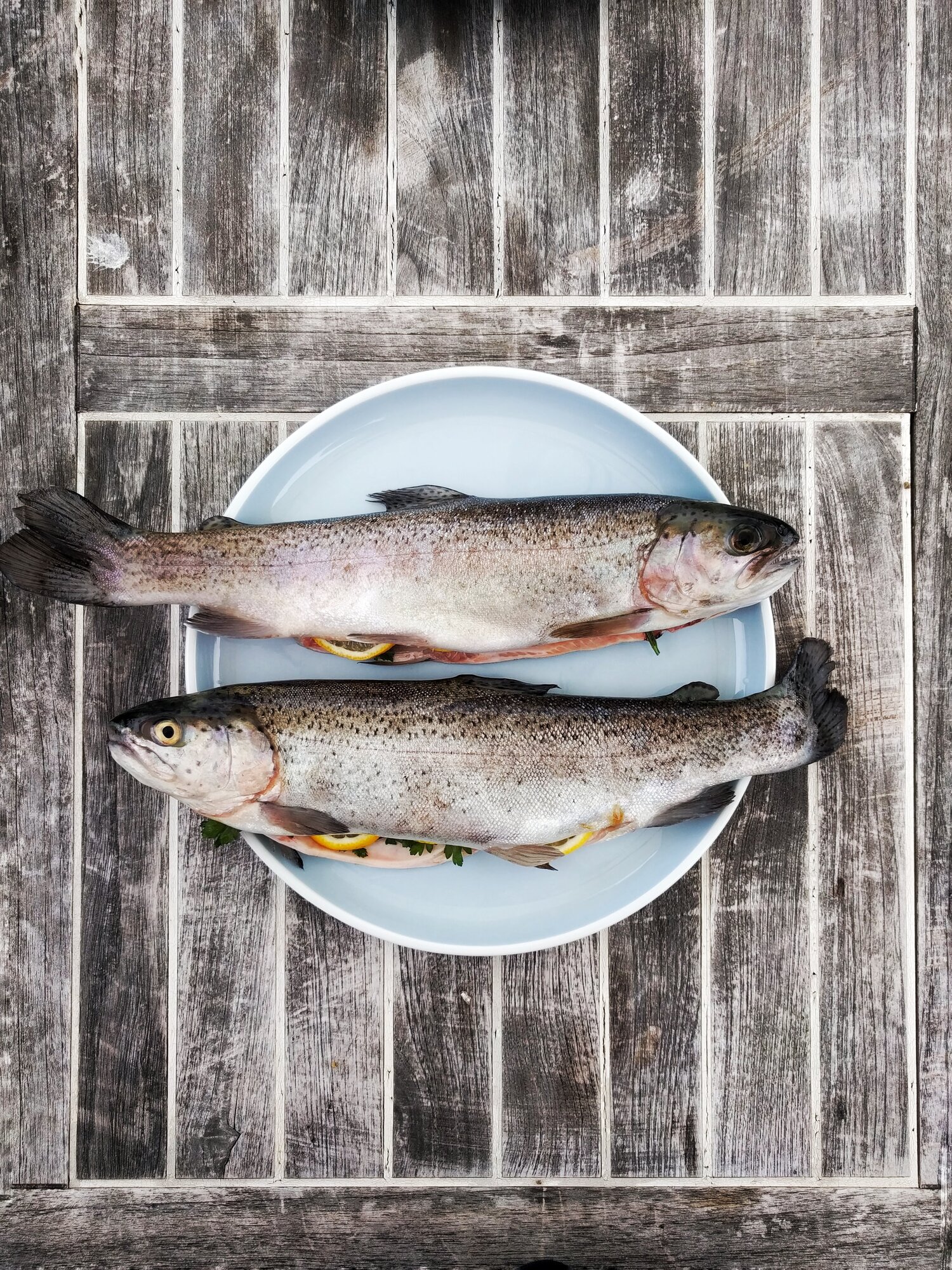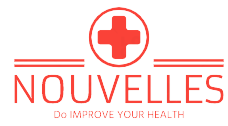[ad_1]

Seafood can be a particularly healthy part of a healthy & balanced diet.
It’s been a dietary staple of many cultures for millennia—and for good reason!
The health benefits of seafood
Fish is considered a “healthier” animal protein than other sources, as it’s high in lean protein, healthy fats (omega-3s!) and other essential nutrients.
And shellfish (like shrimp, crab, oysters, clams, scallops, etc.) are particularly rich in immune-boosting nutrients like zinc, magnesium, selenium and B-12, which tend to be common nutrient deficiencies in the Standard American Diet.
As we’ve chatted about before with regard to vitamin D deficiency, seafood has been a primary source of meeting essential vitamin D nutritional needs for people living in wintery climates.
Seafood is rich in beneficial omega-3 fatty acids, which is important for brain and heart health and has been shown to reduce inflammation in the body, as well as reduce risk of heart disease, stroke, and Alzheimer’s disease. (Yay!)
Several prominent studies have shown that children born to mothers who ate omega-3 rich seafood during pregnancy had better functioning cerebral and nervous systems and scored higher on intelligence tests—information that’s led to a surge of interest in adding more seafood to a healthy diet for pregnant women (more on that below!).
So, seafood has some significant health benefits. But there are also some modern-day health risks to know about (lookin’ at you, mercury…), so you can make informed decisions when shopping for and enjoying seafood.
Why is it important to shop for healthy seafood?
Seafood is generally considered “healthy,” but if you choose to eat seafood, there are some important things to know about making sure the particular seafood you’re consuming is healthy—both for you and our oceans and lakes. Here’s why:
Heavy metals
Decades of pollution from industrial activity have resulted in toxic contaminants like mercury, cadmium and PCBs (polychlorinated biphenyls) finding their way into our waterways… and the fish and sea creatures that live there. 😬
When we eat seafood, we’re eating these pollutants too. And, needless to say, they’re detrimental to our health.
Though there are many other toxic compounds found in seafood as well, heavy metals like mercury are a particular problem.
Mercury is a neurotoxin that can cause fatigue, headaches, memory loss and difficulty concentrating, sleep disturbance, tingling or numbness, and vision problems. And, most significantly, it can stunt fetal and infant brain development (which is why it’s so important that pregnant and breastfeeding women limit exposure to mercury in particular).
Food-borne illness
Consumption of raw seafood that has not been properly handled and stored can lead to serious food-borne illness. Of course, this is true of other foods too, but raw seafood is particularly common in cuisine like sushi, ceviche, oysters, etc.
Shellfish is one of the most common food allergens, and allergic reactions to shellfish can lead to serious complications. (Not that healthy seafood choices can fix this, but just a note to be aware of, as it can sometimes be confused with food poisoning!)
Overfishing
Global fisheries are threatened by overfishing, improper harvesting methods that result in “by catch” of unintended species, and climate change. It’s essential for the health of our waterways (and our continued consumption of seafood!) to practice sustainable fishing methods.
Aquaculture or “farmed fish” is a possible solution, though there are also some sustainability concerns there as well. Some fish farms cause habitat damage and pollution to the surrounding area, escapes of farmed fish into the wild threaten wild fish populations, and disease among farmed fish can be a problem.
But, despite these very real challenges in sourcing healthy, safe and sustainably harvested seafood, there are some things we can do to maximize the health benefits of eating seafood while minimizing the risk from pollution, food-borne illness and overfishing.
When purchasing healthy, safe and sustainable seafood, we’ll want to look for options that are:
→ high in omega-3s and other beneficial nutrients
→ low in mercury
→ from fisheries that are sustainably managed or responsibly farmed
Here’s what to know as you shop for healthy & sustainable seafood:
-
Cold-water fish (like salmon, tuna, sardines and trout) are high in omega-3s, docosahexaenoic acid (DHA) and eicosapentaenoic acid (EPA)—all important nutrients for heart and brain health, as well as keeping your vitamin D levels up during less-sunny winter months.
-
In general, larger and older fish accumulate more environmental toxins like mercury, because toxins accumulate over time. And, big fish higher up the food chain contain more mercury than smaller fish lower on the food chain.
-
We’re all exposed to environmental toxins in many different ways (everything from the air we breathe, the food we eat, and the skincare and beauty products we use). The goal isn’t necessarily to eliminate our exposure to toxins by eschewing seafood, but to balance the health benefits of eating seafood with what we know about the safest options for doing that.
-
Shellfish from warm waters are more likely to carry illness-causing bacteria. When consuming raw shellfish (yum, oysters!), look for options harvested in cold water sources. (Most U.S. cases of serious food-borne illness from oysters are traced to oysters harvested in warm Gulf Coast waters during warmer months.)
-
Most wild-caught fish is frozen at sea, so frozen or “previously frozen” fish is actually some of the freshest available.
-
Natural food stores like Whole Foods or your local natural foods co-op generally have sustainable seafood sourcing standards. When in doubt, these policies and labels can help you make informed decisions while shopping for seafood.
-
The Monterey Bay Aquarium’s Seafood Watch Guide is a helpful tool for monitoring recommendations for the best seafood choices. And, they also have a helpful app that’s particularly useful to pull out when ordering fish you may be unfamiliar with, like sushi! 🍣
-
The Global Aquaculture Alliance’s Best Aquaculture Practices label denotes third-party certification of sustainable aquaculture practices.
The healthiest seafood options
Here’s a list of what’s widely considered to be the “healthiest” seafood options—those that have the best nutrient profiles (healthy fats + low in mercury) and come from sustainably harvested fisheries:
Wild-caught Alaskan salmon: Wild Alaskan salmon is a high-omega-3, low-mercury seafood option sourced from oceans, lakes or rivers. If purchasing farmed salmon, look for a third-party certification of sustainable practices, like the Global Aquaculture Alliance’s Best Aquaculture Practices label.
Sardines: Sardines are high in healthy omega-3s and vitamin D, and because they’re a small fish that feeds primarily on plankton, they’re one of the least contaminated fish. Canned sardines are especially healthy, as you’re consuming the whole fish—bones, scales and all. 😁
Anchovies: Though similar to sardines, anchovies are smaller and more oily. They’re another high-omega-3, low-mercury healthy seafood option.
Mackerel: This high-omega-3 and low-mercury fish is a great healthy seafood option. Just one serving of mackerel provides 100% the recommended daily value of vitamin D!
Trout: Rainbow trout is a cold-water lake fish that’s sustainably fished, high in omega-3s and low in mercury.
Herring: This popular Nordic fish is also high in omega-3s and vitamin D. Though most commonly found canned, pickled or smoked, it can also be eaten fresh.
Oysters: Oysters are a nutritional powerhouse, with one serving providing 75-100% the recommended daily value of essential nutrients like zinc, selenium, and vitamin D and B12. Look for oysters from colder-water sources (warm water oysters are more likely to carry illness-causing bacteria).
Tilapia: This freshwater fish is commonly farm-raised. It’s a great source of lean protein and low in mercury and other contaminants.
Cod: Because cod is lower in fat, it also tends to be lower in mercury (environmental contaminants bio-accumulate in fat). Cod liver oil is the most common source of vitamin D and omega-3 fish oil supplements.
Arctic char: This fish looks very similar to salmon (and it’s in the salmon family), but tastes a bit more like trout. Its farming practices tend to make it a more sustainable and lower-mercury choice of healthy seafood.
Shrimp: Farmed or wild U.S. shrimp are sustainable options, high in lean protein and low in mercury.
Clams: Clams are high in protein, iron, magnesium and potassium, while low in mercury. They’re also considered a sustainable seafood option.
Tuna: Tuna is wonderfully high in omega-3s, but also tends to be high in mercury, as it’s a big fish higher on the food chain. To balance the health benefits of tuna with the mercury risks of a big fish, look for smaller species like skipjack (what’s commonly used in “chunk light” canned tuna). Yellowfin tuna (also called ahi) is higher in mercury but could be safely eaten in moderation, about once a month. It’s best to avoid bluefin tuna, commonly used in sushi, as it’s a depleted fishery.
Seafood to avoid
Some of the highest-mercury seafood sources and most threatened fisheries to avoid are:
-
Bluefin tuna
-
Chilean sea bass
-
King mackerel
-
Marlin
-
Monkfish
-
Orange roughy
-
Shark
-
Swordfish
Is it safe to eat raw fish?
Uncooked seafood is a common and “healthy” part of various cuisines around the world—from sushi in Japan to gravlax in Sweden to ceviche in Latin America.
If handled and stored properly, raw fish (and some forms of raw shellfish) is generally safe to eat.
However, it does carry some risk of food-borne illness if not handled and stored properly! And, it’s recommended that pregnant women or anyone with a weakened immune system avoid raw seafood, as the risk of serious complications from food-borne illness is more severe.
How much seafood is it safe to eat?
In general, most people can safely consume about 2-4 servings of seafood weekly, if you’re following the tips above to source sustainably wild caught (or responsibly farmed) low-mercury options.
The American Heart Association recommends eating at least two servings of fish weekly to reduce risk of heart disease and stroke.
Pregnant or nursing women should be particularly careful about seafood consumption. Not only can improperly stored or prepared seafood make you very sick (that’s why pregnant women are told to avoid sushi out of an abundance of caution), but pregnant women also need to be especially careful about heavy metals, as they can harm a developing fetus.
So how much seafood should pregnant women eat?
Pregnant and nursing women are advised to eat two servings of high omega-3 low-mercury seafood (like salmon, sardines, or mackerel) weekly.
Because mercury can pass through breastmilk, it’s also recommended to continue avoiding higher-mercury fish while breastfeeding.
[ad_2]



